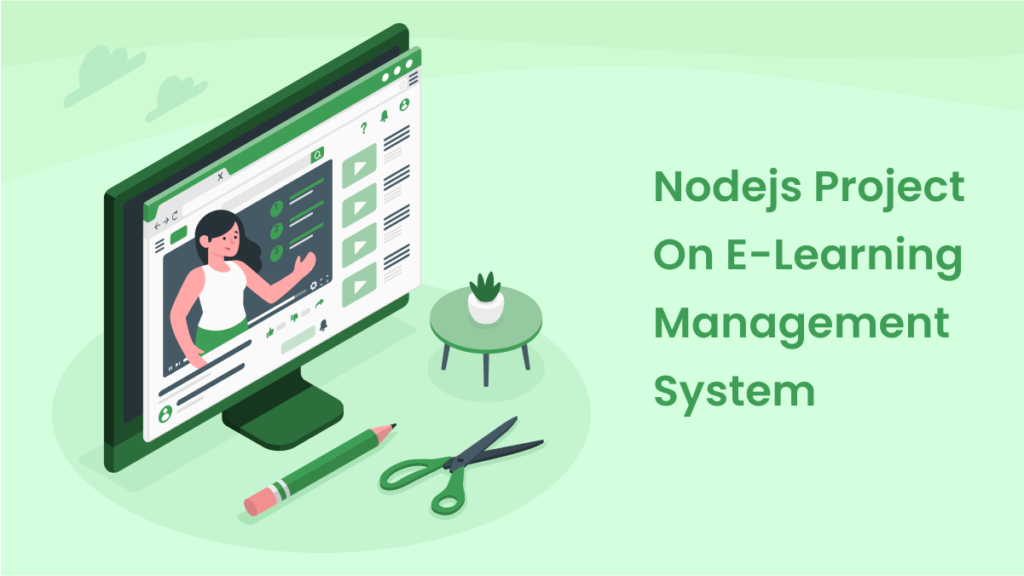Node.js is a cross-platform, open-source, back-end JavaScript runtime environment. It works on the V8 engine and carries out JavaScript code outside a web browser. The primary objective of Node is to create extensible network applications.
Sounds a little too foreign? What Node.js and the V8 engine mean is more speed and power for web-based eLearning applications. The performance of Node.js is a great enhancement, and it’s no mystery real-time web applications are most commonly built with Node.js. Using it, it is possible to create cross-platform web applications that can run on any platform.
A Node.js app doesn’t need to create a new thread for every single request. It runs in a single process. “Multi-threading” is Node’s killer feature.
Here are a few statistics that prove Node is a prime choice for modern development projects.
- Netflix, Amazon, Reddit, eBay, Tumblr, LinkedIn, and PayPal run on Node.
- 85% utilize it primarily for web app development. 43% of Node developers utilize it for enterprise applications.
- PayPal saw a 35% decrease in average response time on its page after making use of Node.
Getting started with Node.js for a Learning Management System project
The main objective of Node applied to an LMS project is to create a more seamless experience managing and updating system states. This means we can update details of schedules, students, their courses, the fees or subjects more quickly.
Get started by considering the needs of an LMS administrator. This is also helpful to start considering permissions management, or who is able to perform what action on the system. Draw a hierarchy of system permissions from the top down, and think of the common needs and pain points of a user: A mid-level administrator, teachers, students and maybe supporting roles like TAs or parents. How will your LMS make each of their lives easier? Bonus points if you consider your LMS’ ability to play nice with other systems, such as email or SMS notifications, payment gateways, calendar clients and so on.
It’s good practice to think of the possibilities your system will enable your users —also known as affordances— before delving into Node’s features. But once you have a good understanding, feel free to consider Node’s features and how they can enhance the user experience further:
- In addition to supporting real-time connections, Node also supports peer-to-peer communication, making it easier for real-time collaboration activities.
- Node’s open source nature makes it easier for collaborative development through tools like version control and open repositories, like Git and GitHub.
- Being open source and JavaScript based also means it’s readily available across platforms and browsers. It might lean the balance towards a responsive web application —perhaps even a Progressive Web Application— over a native mobile app.
- Node enables you to build extensible programs that have capability of handling huge traffic spikes, opening multimedia and interactivity possibilities.
- Node gives to developers scalable resources to easily build enterprise-level web applications.
Designing LMS functionalities in Node.js
It can feel like walking on a tightrope to turn affordances into features, into tasks in a development process. Just remember to breathe. Rome.js wasn’t built in a day.
It’s common for developers to think of a “Minimum Viable Product” or MVP, although the MAP, with the “A” for Awesome stepping in, is gaining traction in some circles. In any case, both concepts can be met at once by considering the unique functionalities or approach you are bringing to the table. The real tightrope walk ends up being between your vision, and what your user believes as standard order and expected.
Check out the following functionality set for a “standard LMS with a twist”
- This LMS project will provide a search feature, which will help users easily find things like students, courses, fees and subjects.
- It will also show various user details including course status and recent activity, with quick editing options for authorized users.
- The project will easily and effectively track data on schedules, fees, courses and more, with instantly updated dashboards and reports.
- Interfaces such as schedules, student lists and grades will allow quick bulk editing.
- It will increase the efficiency of management by enabling automations of the “if-this-then-that” type.
- It will feature monitoring of transactions and user status in real time, toggling site and content access accordingly.
- Adding, editing, and updating of records can be done on-the-go but quick undo and backup features will be enabled.
- It will feature quick record generation based on compliance requirements.
To sum up — and a final note
Developing an LMS is no small task. But it can become easier to build with the use of Node.js. Benefits pour across the ideation, development, maintenance and management process, as long a sound plans are in place. Overall, Node can be a critical tool for the development of cost-effective, fast and modern eLearning applications that run on any device.
Among programmers it is common knowledge that it’s never a good idea to rely on a single programming language. However, thanks to Node, the same developers can work on back-end and front-end tasks. Not to deny that specialized expertise comes a long way to carry a project successfully to the end, within the allotted time and budget. As an eLearning professional, it is important to understand the scope of a project, but it is ultimately best for the project’s sake to rely on expert developers. Alternatively, you can connect to a Node.js development company to develop an LMS with Node.js.







